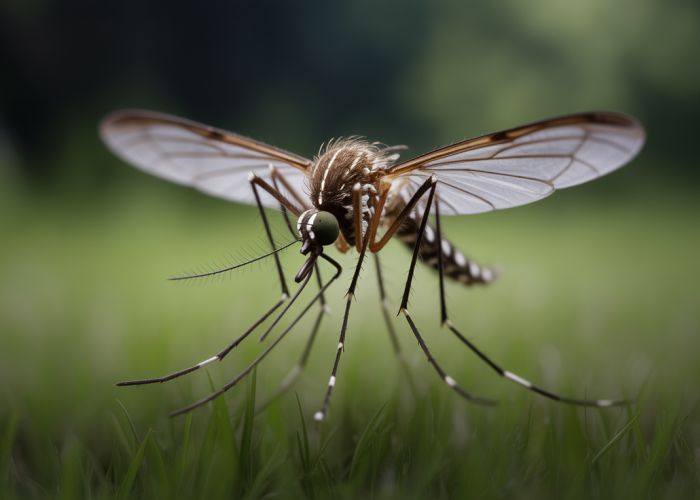Anopheles mosquitoes, vectors of malaria, often display varying mosquito flying height depending on environmental conditions. Wind speed, a significant meteorological factor, directly influences a mosquito’s ability to maintain altitude. Understanding vector control strategies necessitates an accurate assessment of the maximum mosquito flying height. Research conducted by institutions like the CDC further explores the correlation between mosquito flying height and the spread of mosquito-borne diseases.

Understanding Mosquito Flying Height
This explanation details an optimal article layout for a comprehensive piece discussing "mosquito flying height," focusing on presenting information clearly and analytically. The primary goal is to answer the question: "How high do mosquitoes actually fly?".
Introduction: Hook and Context
- Engaging Hook: Begin with a captivating anecdote or a startling statistic related to mosquitoes and their impact on human health or outdoor experiences. For example, you could mention the number of cases of mosquito-borne illnesses reported annually or the economic impact of mosquito control.
- Define Mosquitoes: Briefly introduce mosquitoes, their life cycle, and the reasons why understanding their behavior is important.
- State the Main Question: Clearly state the central question that the article will address: "How high can mosquitoes fly?".
- Outline Scope: Briefly mention the factors influencing mosquito flying height, such as species, weather conditions, and resource availability, which will be discussed in later sections.
Average Flying Height of Mosquitoes
This section provides the general answer to the central question, offering typical height ranges and variations.
Typical Flight Range
- Provide a Range: State the average flying height range for most common mosquito species. Use both feet and meters for global accessibility (e.g., "Most mosquitoes typically fly between ground level and 25 feet (approximately 7.5 meters).").
- Explain Limitations: Emphasize that this is an average and that several factors can influence a mosquito’s ability to fly higher.
- Visual Aid (Optional): A simple infographic showing the typical flight range in relation to common landmarks (e.g., a one-story house, a tall tree) can be helpful.
Factors Influencing Flight Range
This section introduces the factors that affect how high a mosquito will fly. Each factor will be discussed in more detail later.
- List of Factors:
- Species
- Wind Speed
- Temperature
- Humidity
- Resource Availability (food, breeding sites)
The Role of Mosquito Species
This section dives into how different mosquito species exhibit varying flying heights.
Species-Specific Variations
-
Examples: Highlight specific mosquito species (e.g., Aedes, Anopheles, Culex) and their typical flight heights. Include scientific names for clarity.
Species Typical Flying Height (approximate) Notes Aedes aegypti Ground level to 10 feet Known to fly close to the ground and target ankles. Anopheles gambiae Ground level to 30 feet Can fly higher than Aedes aegypti, but generally stays relatively low. Culex pipiens Ground level to 25 feet Can be found in urban environments and tends to fly at moderate heights. - Explain the Reasons: Discuss the reasons for these variations. This could relate to their wing structure, body size, or habitat preferences.
- Referencing Studies: If available, cite scientific studies that have investigated the flight capabilities of different species.
Environmental Factors and Flight Altitude
Explore how environmental conditions influence mosquito flying height.
Wind Speed
- Explanation: Describe how wind speed affects a mosquito’s ability to fly and maintain its altitude.
- Thresholds: Mention the wind speeds at which mosquitoes struggle to fly or are forced to seek shelter.
- Upward Air Currents: Explain how updrafts can potentially carry mosquitoes to higher altitudes, even if they wouldn’t normally fly that high.
Temperature and Humidity
- Optimal Conditions: Explain the temperature and humidity ranges that are most conducive to mosquito flight.
- Extremes: Describe how extreme temperatures or humidity levels can limit a mosquito’s ability to fly. High temperatures and low humidity can dehydrate mosquitoes, while very low temperatures can cause them to become inactive.
- Thermals: Briefly discuss how mosquitoes might use thermals to ascend to higher altitudes, especially during certain times of the day.
Resource Availability
- Breeding Sites: Explain how the proximity of breeding sites (e.g., standing water) can influence the typical flying height of mosquitoes. If breeding sites are near higher elevations (e.g., on rooftops), mosquitoes may be found at those heights.
- Food Sources (Humans and Animals): Discuss how the presence of human populations or animal hosts at different elevations can influence mosquito flight patterns.
- Vegetation: Mention that dense vegetation might restrict mosquito movement and keep them closer to the ground, while open areas allow for more vertical movement.
Extreme Cases: When Mosquitoes Fly Higher Than Expected
This section explores rare instances where mosquitoes might be found at higher altitudes.
Human Transport
- Cars and Trucks: Explain how mosquitoes can be transported to higher altitudes unintentionally via vehicles, particularly in rural areas.
- Airplanes: Mention that mosquitoes can be transported globally via airplanes, though this is not necessarily related to voluntary flight height.
Natural Phenomena
- Storms and Hurricanes: Describe how extreme weather events can carry mosquitoes to unusually high altitudes and over long distances.
- High-Altitude Environments: Discuss whether certain mosquito species are adapted to live in mountainous regions and therefore naturally fly at higher altitudes. If so, provide specific examples.
Implications of Mosquito Flying Height
This section discusses the relevance of understanding mosquito flying height for control and prevention strategies.
Targeted Control Measures
- Spraying Strategies: Discuss how knowing the typical flying height of mosquitoes can inform the design of targeted spraying programs, such as aerial spraying or ground-based fogging.
- Personal Protection: Explain how understanding flight height affects personal protection strategies, such as using screens, mosquito nets, and insect repellents.
- Breeding Site Reduction: Reiterate the importance of eliminating breeding sites, especially in areas where people are vulnerable to mosquito bites.
So, now you know a bit more about mosquito flying height! Hopefully, this gives you a better idea of what to expect and how to stay protected. Sweet dreams, and watch out for those buzzing bugs!